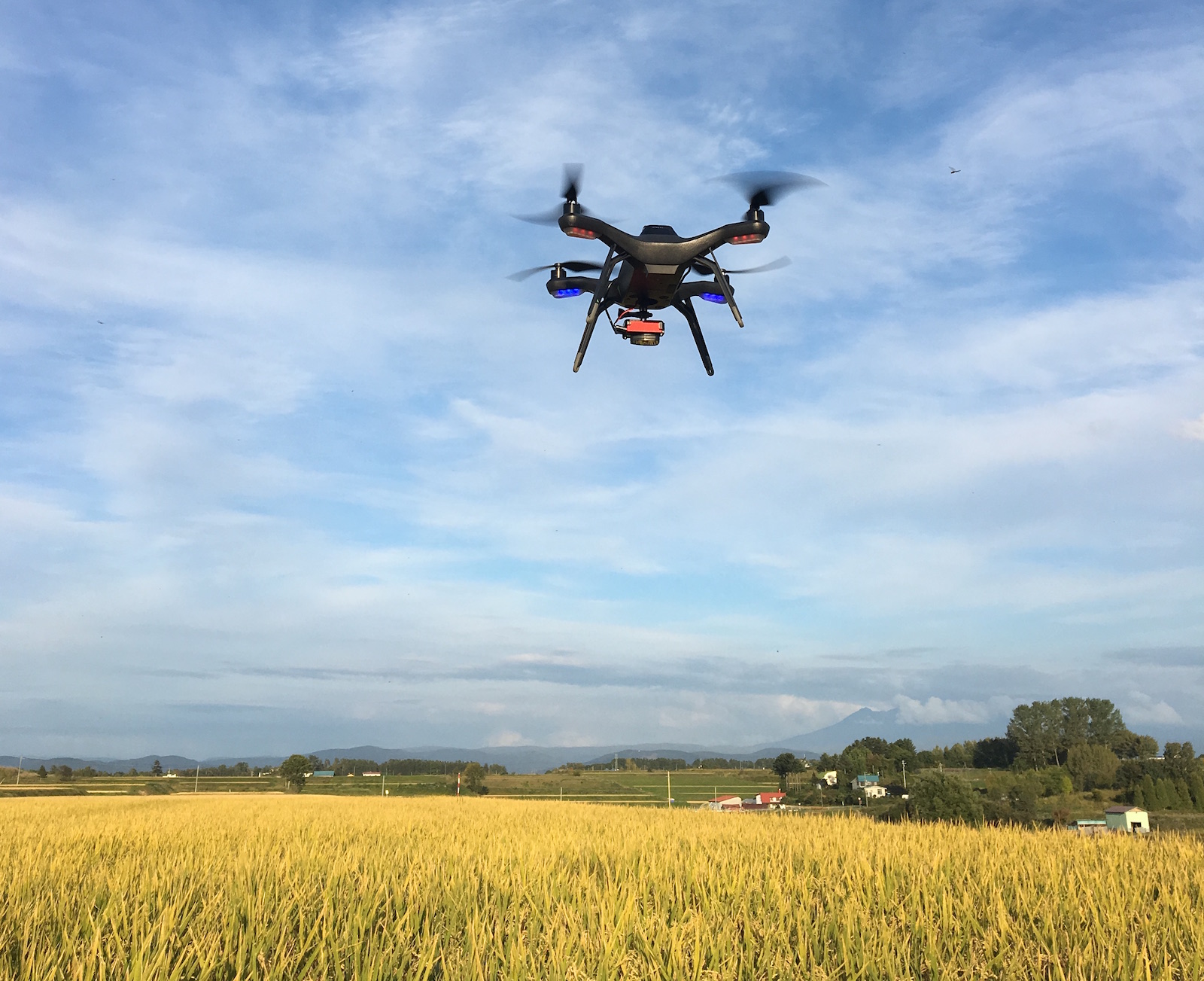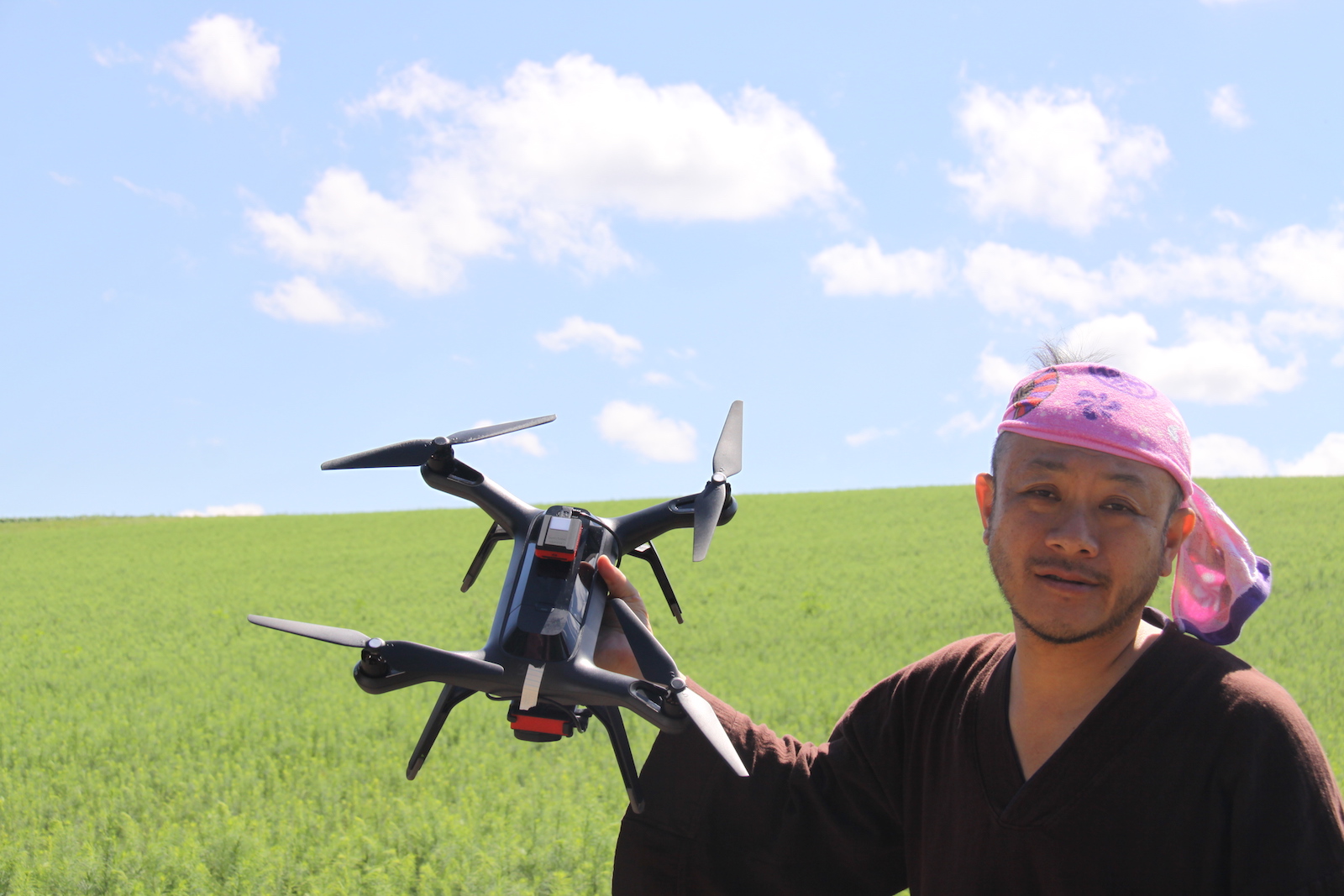Unmanned aerial vehicles (UAVs) a small autonomous craft that is being applied to such diverse industries as real estate, construction, and agriculture. In Japan, an aging population means that the number of farmers is dwindling. As fewer young people take over from their elders, new technologies such as drones are becoming a central part of agriculture.
TECH DRIVE
According to the Statistics Bureau of the Ministry of International Affairs and Communications, forestland and fields cover nearly 80 percent of the country.
That’s a lot of land to manage with a dwindling labor force.
Exacerbating the matter, The productive-age population (15–64 years) has been in decline since 1993, now totaling 76.56 million
Labor solutions have never been more necessary, and drone technology is proving to be one solution for farming.

Yamaha began developing pilotless drones in 1983 at the request of the Japanese Ministry of Agriculture, Forestry and Fisheries and completed its first utility-use unmanned helicopter, the R-50, in 1987.
An unmanned helicopter introduced in 1997. They have been heavily utilized in spraying rice paddies, our initial target has been vineyards—specifically vineyards on difficult terrain.
OPTiM Corporation’s Agri Drone is another product making headway in this space. It was originally created as part of a three-way collaborative agreement with Saga Prefecture and Saga University.
“The overall goal of the agreement is to modernize the agricultural industry in Saga, and drones were seen as a way to reduce labor and improve crop care.
The technology can be used to survey crops and take photos of plants, allowing farmers to find insects, pest damage, weeds, diseased plants, and mold. The “pinpoint insect extermination” feature allows farmers to attach a pesticide bottle to the drone and spray only areas where insects are detected, reducing labor and the amount of chemicals used.
Another feature that James highlighted is the chemical-free bug zapper attachment, which hangs from the drone as it flies low over crops. Using it, farmers can eliminate more than 50 common varieties of pests that come out only at night. A method for targeting white-backed plant-hoppers—insects that are particularly harmful to rice—is also under development. This technology will be especially useful in Japan, where rice is so critical to the market.

NEW APPEAL
Attracting younger generations of farmers is a continuous problem. Anderson believes that the piloting of drones is a skill set the younger generation finds attractive. “We feel that introducing a new skill set such as this could provide some benefit to the shrinking labor pool within agriculture. While many people do not have any interest in hand spraying a field, they may have interest in piloting an unmanned helicopter to do the spraying.”
Agri Drone can take multi-spectrum images, such as near-infrared and thermal. Future drones may be able to record the height of a crop from above, or view root structures.”
Sustainability with technology is inevitable and mandatory for the future—especially for the next generation of farmers. Particularly for Japanese rice, this technology can help make the sector more competitive.
“The Japanese Rice Project is about finding the Japanese traditional mind again, not just technology, selling, and agriculture. It’s an education for future farmers.”
Contact: Fly Dragon Drone Tech.
Email: frank at dronefromchina.com
Add: NO. 9 Dayu Road PiDu distric, ChengDu 611730, China